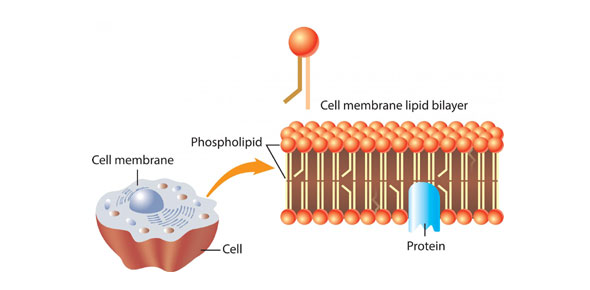Cell Membrane As Level

- 1.
Why id Plasma membrane is called "Fluid" mosaic model?
- A.
Because of cholesterol present in it.
- B.
Because the substance in the membrane are free to move,
- C.
Because phospholipids are made up of water.
- D.
Beacuse its been named after the scientist
Correct Answer
B. Because the substance in the membrane are free to move,Explanation
The plasma membrane is called the "Fluid" mosaic model because the substances within the membrane are free to move. This means that the lipids and proteins in the membrane can move laterally within the bilayer, giving it a fluid-like characteristic. The mosaic part of the name refers to the diverse arrangement of proteins and lipids in the membrane, forming a mosaic pattern. The presence of cholesterol in the membrane helps maintain its fluidity by preventing the lipids from packing too closely together.Rate this question:
-
- 2.
Which part of the cell membrane water uses to enter?
- A.
Gylcoprotein
- B.
Channel proteins
- C.
Phospholipids
- D.
Carries proteins
Correct Answer
C. PhospholipidsExplanation
Water enters the cell membrane through the phospholipids. Phospholipids are the main components of the cell membrane and they form a bilayer structure. This bilayer has a hydrophobic interior, which repels water, and a hydrophilic exterior, which attracts water. The hydrophilic heads of the phospholipids interact with water molecules, allowing water to pass through the membrane. Therefore, the phospholipids provide a pathway for water to enter the cell membrane.Rate this question:
-
- 3.
What is the functions of glycoproteins/lipids?
- A.
Removes the waste
- B.
Helps in osmosis
- C.
Act as a hormone
- D.
Act as a recepter
- E.
Act as a chemical messenger
Correct Answer
D. Act as a recepterExplanation
Glycoproteins/lipids act as receptors in various cellular processes. Receptors are proteins or molecules on the cell surface that bind to specific molecules, such as hormones or chemical messengers, to initiate a response within the cell. By acting as receptors, glycoproteins/lipids facilitate signal transduction, allowing cells to respond to external stimuli and regulate various physiological processes. They play a crucial role in cell communication, coordinating cellular activities, and maintaining homeostasis.Rate this question:
-
- 4.
At is the function of recepters ( glycoprotein/lipids)?
- A.
They controls the blood level
- B.
They control the movement of molecules into the cell
- C.
They help the cell to communicate with the other cells
- D.
Eat bacterias,
Correct Answer
C. They help the cell to communicate with the other cellsExplanation
Receptors, whether glycoproteins or lipids, play a crucial role in cell communication. They are responsible for receiving signals from other cells or the external environment and transmitting these signals into the cell. This communication allows cells to coordinate their activities, respond to changes in their environment, and maintain homeostasis. Therefore, the correct answer is that receptors help the cell to communicate with other cells.Rate this question:
-
- 5.
What is attached to the proteins or lipids to make glycoprotein or glycolipid?
- A.
Fatty acids
- B.
Carbohydrates
- C.
Amino acids
- D.
Proteins
Correct Answer
B. CarbohydratesExplanation
Carbohydrates are attached to proteins or lipids to form glycoproteins or glycolipids. This process is called glycosylation. Carbohydrates play important roles in cell recognition, cell signaling, and immune response. They can act as markers on the cell surface, allowing cells to interact and communicate with each other. Glycoproteins and glycolipids are found in various biological processes, such as cell adhesion, cell membrane stability, and protein folding. Therefore, carbohydrates are the correct answer for this question.Rate this question:
-
Quiz Review Timeline +
Our quizzes are rigorously reviewed, monitored and continuously updated by our expert board to maintain accuracy, relevance, and timeliness.
-
Current Version
-
Mar 21, 2023Quiz Edited by
ProProfs Editorial Team -
Oct 18, 2011Quiz Created by
Suave444
 Back to top
Back to top


